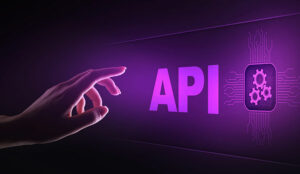These days, it’s easy to look at technology like a silver bullet. Got a problem? Throw a new tech tool at it and then sit back and watch as the magic happens.
It’s hardly ever that simple in reality, though. In fact, even with the huge assortment of software, platforms, and other technology on the market today, teams are struggling. In one recent survey, only 37% of support leaders are happy with their current tools.
So where are things falling apart? John Wang at Assembled gives five common ways that your customer support tech stack is failing your team (and, as a result, your customers too).
1. Legacy Systems Keep You Stuck in the Past
We’ve all endured a relentless amount of change in recent years, with 71% of employees admitting that they’re overwhelmed by the amount of change at their job.
Switching software or overhauling your tech stack? That can seem like yet another daunting shift — and it’s easy to tell yourself it’s not worth rocking the boat right now.
That’s likely why 45% of customer service reps say they avoid adopting new technologies by relying on legacy systems and tools.
But despite the fact that consistency might seem comforting, those old and outdated solutions hold your entire customer support team back.
An impressive 46% of businesses consider legacy systems to be a major barrier when trying to implement a digital-first customer engagement strategy.
Plus, with customer expectations rapidly evolving — from self-service options to AI-powered support — those antiquated systems just can’t keep up, even with seemingly simple expectations like personalization.
In fact, 54% of teams say they can’t personalize support with their current tech stack.
2. Poor (or Nonexistent) Integrations Cause Clunky Workflows
It’s no secret that customer-facing employees are burned out in a major way, with an estimated 59% of contact centre agents at risk of burnout.
Your team needs more support and less to do — but faulty or inadequate technology flips that equation around. They wind up with less support and more to do.
Daily work is a lot easier when customer support tools talk to each other through seamless integrations.
When they don’t, your agents need to spend time toggling between tools to make notes or find the information they need.
50% of customer support teams say they waste precious time by having to jump between their disparate tools and platforms.
The right technology stack gives your agents back more of their most precious resources: their time and their energy.
3. Disjointed Solutions Hide Important Information
Your support team uses one platform for managing all email inquiries. You might use another platform for recording notes from all phone support interactions.
Instant messages are housed elsewhere. And other customer information? You can find that in a spreadsheet… umm… somewhere.
This sort of cobbled together method wastes time, but it also creates data silos — meaning you miss the opportunity to reference history, spot trends, or glean other important and holistic insights.
That leads to a completely reactive approach that’s pervasive on a lot of support teams. Only 37% of support leaders feel confident that their organization’s tech stack can help them analyze trends and produce insights to optimize decisions for customers.
A better tech stack means better visibility and the ability to bridge the gap between multichannel support and true omnichannel support, where all of your customer touchpoints are connected and cohesive.
4. Outdated or Ramshackle Systems Make You Vulnerable
From payment information to login details, your support team handles a lot of sensitive information on behalf of your customers.
And while it’s not the most pleasant thought, that makes you particularly vulnerable to security breaches.
That’s especially true if you’re relying on a rickety tech stack. Stitching all sorts of disparate solutions together with duct tape and workarounds means more holes for hackers to exploit and get through.
Legacy systems also often aren’t adequately supported with security updates and fixes (if they’re supported at all), which makes you even more susceptible.
Plus, unfortunately, security often isn’t top of mind when support leaders evaluate and get excited about new tech tools.
As one article for Harvard Business Review explains, “Products are usually purchased for the value-added features they provide, not because they are secure.”
That all adds up to major risks for cyberattacks. And when a recent report from IBM states that the average cost of a data breach in 2023 is $4.45 million, it’s a pretty expensive gamble.
5. Inadequate Tech Hinders Your Customer Experience
An insufficient tech stack has all sorts of direct impacts on your team — frustrating and dated interfaces, slower and more complex workflows, security risks, and an overall lack of visibility.
But the fallout doesn’t just stop with your customer support team. It trickles all the way down to your customer experience.
Think about it: When your team isn’t supported with the right technology, they’re bound to need longer response times to get to the information they need.
And even then, they have way less context about previous customer support interactions, which makes your customers feel unheard and forgotten.
The result is a customer support experience that’s choppy and frustrating for both your team and your customers.
And when customer care leaders say improving the customer experience is their fastest-growing priority area, you can’t overlook the importance of technology in shaping your support interactions.
Improving the experience for your customers starts with improving the experience for your team.
Wrong Tech, Big Mess
Technology is capable of so much, which makes it easy to think of it as a fix-all. But when it comes to elevating support for your team and your customers, you can’t just have technology — you need to have the right technology.
For tech leaders, that means evaluating their tech stack at least annually, investing in training to be able to use tools to their full potential and seamlessly connect them with other solutions, and modeling a healthy appetite for change on their own teams (because, let’s face it, switching tools is always hard).
Do those and you’ll build a customer support tech stack that pushes you forward, rather than holds you back.
This blog post has been re-published by kind permission of Assembled – View the Original Article
For more information about Assembled - visit the Assembled Website
Call Centre Helper is not responsible for the content of these guest blog posts. The opinions expressed in this article are those of the author, and do not necessarily reflect those of Call Centre Helper.
Author: Assembled
Published On: 18th Jan 2024 - Last modified: 9th Dec 2024
Read more about - Guest Blogs, Assembled






 Assembled is a Support Operations platform that helps companies maintain exceptional customer experiences, no matter what lies ahead. Leading brands use Assembled's workforce and vendor management capabilities to make optimal staffing decisions, gain visibility into performance and productivity, and unlock new ways to serve evolving customer needs.
Assembled is a Support Operations platform that helps companies maintain exceptional customer experiences, no matter what lies ahead. Leading brands use Assembled's workforce and vendor management capabilities to make optimal staffing decisions, gain visibility into performance and productivity, and unlock new ways to serve evolving customer needs. 





























